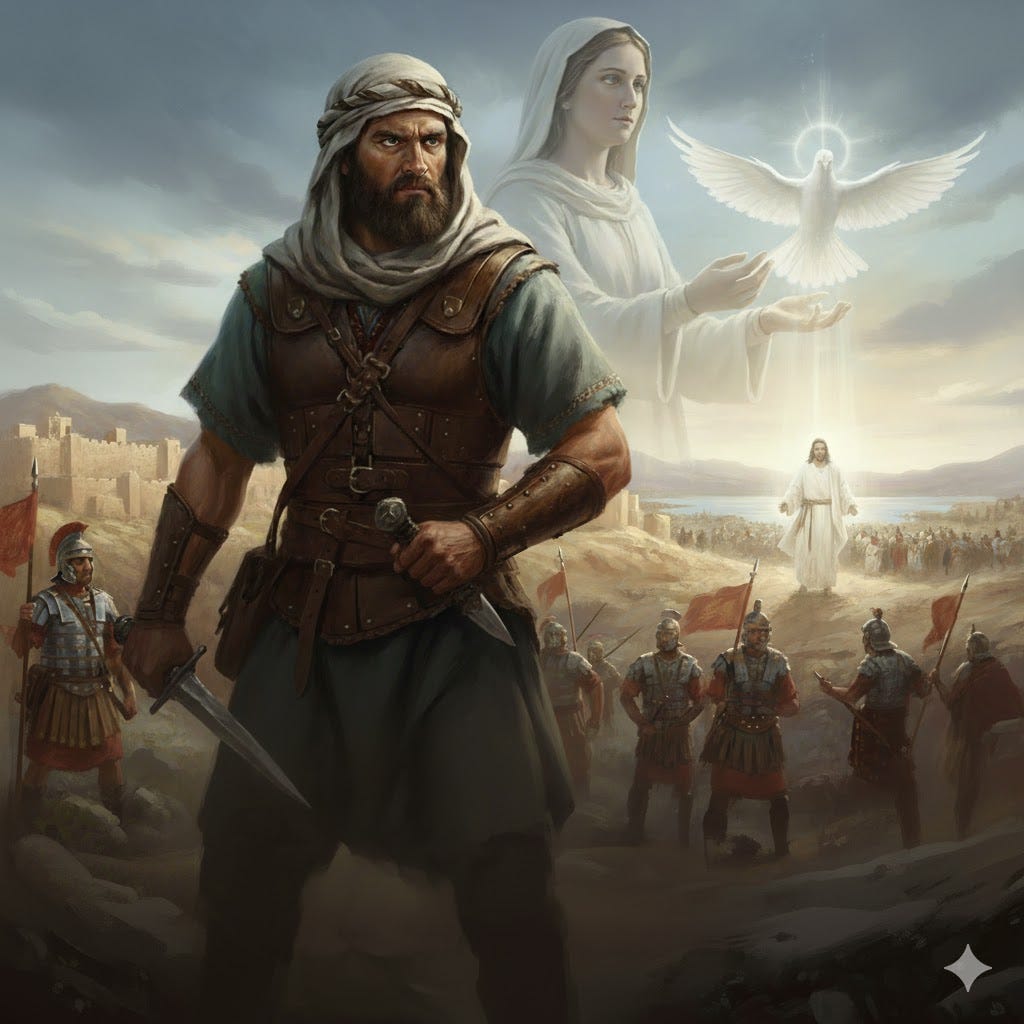I just read Fishers of Men by Gerald N. Lund. It’s the first book in his series called The Kingdom and the Crown.
I’ve never read a Gerald N. Lund book. His series, The Work and the Glory, was, as far as I remember, popular with LDS readers back in the 90s. I remember seeing it on people’s bookshelves.
The book takes place over a few months in 30 AD when Jesus has just started his ministry. It is about a guy named Simeon and how he and his family end up accepting Jesus Christ as the promised Messiah.
Simeon is as Zealot - a Judaean freedom fighter who doesn’t like Rome's treatment of the Kingdom of Judah and the Jewish people. He is looking forward to a Messiah to deliver him and his people from his enemies.
[Simeon] groaned softly and dropped his head in his hands. But if Jesus was the Messiah, the Anointed One of which the prophets spoke so clearly, why wasn’t he acting like it? Why did he speak of loving your enemies and turning the other cheek? Simeon had never accepted his father’s explanation of the “suffering servant” Messiah. On this matter, Simeon’s heart was with his Uncle Aaron. The Messiah was the Deliverer. God would send a king to rise up and overthrow their oppressors. It had to be! Their people had suffered long enough.
Towards the end of the book, Simeon is trying to decide if he is going to launch a surprise attack on a group of Roman soldiers. His hope is that, if he launches an attack on the Romans, and is successful, the Judaeans will rally behind him and his cause. Then, there will be a large citizen army of Judaeans ready to fight the Romans, and that this will push Jesus to take his role at the front of this army as their Messiah, and deliver them from oppression.
Before Simeon chooses to launch this attack, however, he travels to Nazareth to speak with Jesus’ mother, Mary, to be certain her son is actually the promised Messiah. When he is there he learns something shocking — that Jesus is not only the promised Messiah, but also the literal Son of God.
But Simeon, Jesus did not come just to save us from Rome. He came to save the world from sin. All of us. Every soul.
The way that this piece of information is communicated to Simeon is by Mary recounting the story of the Annunciation to him. She recounts, from a personal perspective, the event written about in Luke 1:26-35.
Telling the story of the annunciation, 31 years after it happened, in the context of a dramatic narrative, to help someone use that piece of information to make a decision in their story arc, was surprising. The story technique is all throughout the book, but for some reason having Mary participate it, specifically with the annunciation, was surprising.
Simeon’s dad, David, happened to be present at the manger when Jesus was born, 30 years before this story takes place. And, he happened to be with the Shepherds in the fields who announced Jesus arrival. David tells his version of the Birth of Jesus to multiple people, essentially how it is found in Luke 2.
In another instance of this storytelling technique, we never see Jesus heal the sick man at the pool of Bethesda, a story found in John 5:1-9, but we see one character (Livia), tell another character (Miriam), how she overheard someone at the temple talking about how Jesus healed a sick man at the pool of Bethesda.
The book isn’t about Jesus, per se, and it isn’t about his apostles, per se, it is about the residue of men choosing to believe whether or not Jesus is the Messiah. It is about individuals gathering information, piece by piece, here and there, cataloguing miraculous events, comparing them with others, and deciding how they feel about the entire thing. It is about how people accept or reject Jesus, and how they change their life based on their beliefs.
And by so doing, the Lord God prepareth the way that the residue of men may have faith in Christ, that the Holy Ghost may have place in their hearts, according to the power thereof; and after this manner bringeth to pass the Father, the covenants which he hath made unto the children of men.
However, while the characters are all making their decisions of whether or not they will choose to follow Jesus, we’re also going all the stories of Jesus from the Bible relayed to us. Characters tell each other what they’ve seen or heard. They debate the veracity of the claims. They analyze Jesus’ teachings as modern readers would a Sunday School lesson. They talk about what Jesus’ teachings and miracles mean to them as if it were a devotional. Because of this, the book comes across as very educational / informational.
The educational tone of the book is heightened by Chapter Notes sections at the end of most chapters, where the author jumps in and cites scriptural sources, cites biblical commentaries, and provides personal anecdotes as to why he chose to dramatize the Bible in the way that he did.


